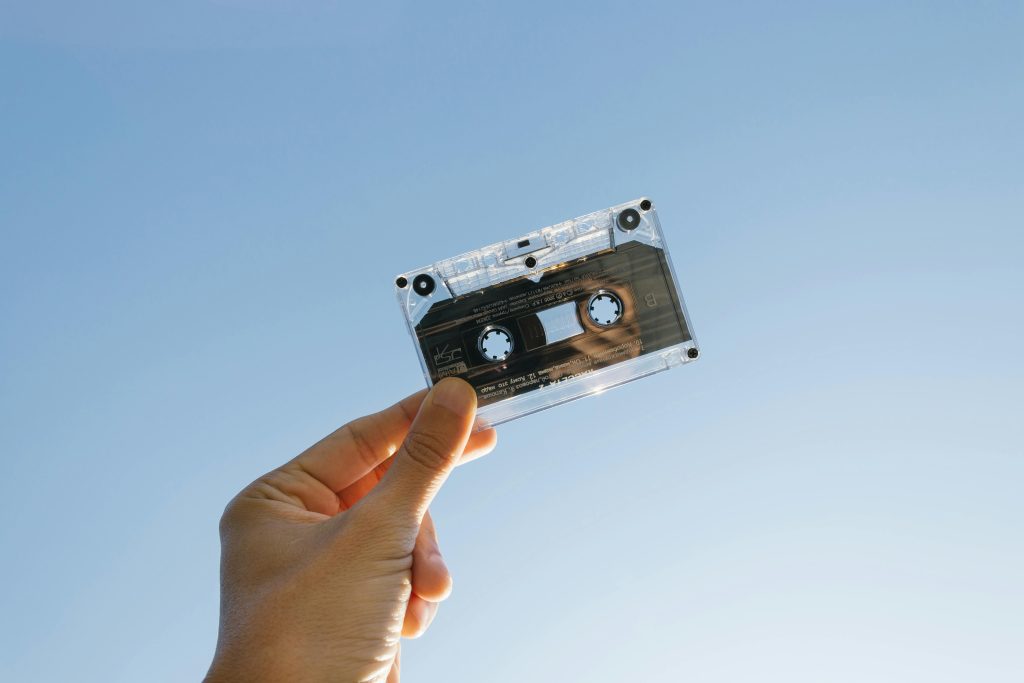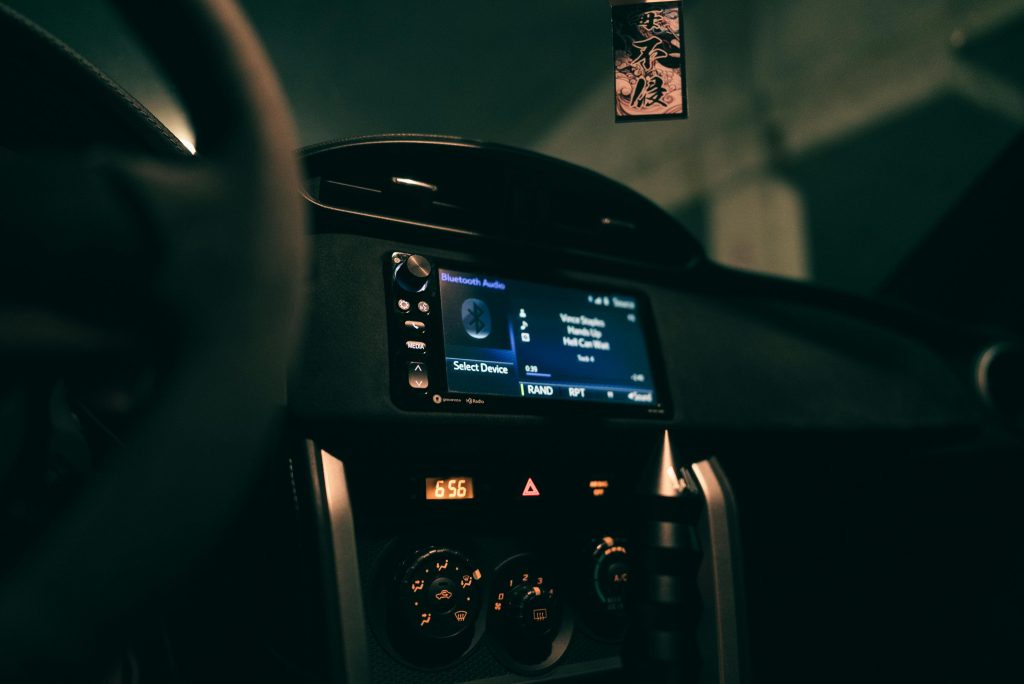Your cart is currently empty!
How Happy Music Helps You Recover From Motion Sickness

For many travelers, motion sickness can transform excitement into misery. The dizziness, nausea, and clammy sweating that accompany a winding road or turbulent flight are symptoms of one of the body’s most peculiar sensory confusions. Roughly one in three people are highly susceptible, meaning they regularly experience discomfort while in motion, often with little recourse beyond medication or closing their eyes until the world stops spinning.
Now, an unexpected new treatment is being explored, and it doesn’t come in pill form. It’s music specifically, joyful or soft music. A growing body of neuroscience research suggests that the right songs can cut motion sickness symptoms by more than half, potentially revolutionizing how we manage this age-old travel woe.
Researchers from China’s Henan Institute of Science and Technology and Southwest University have uncovered a link between musical tone, brain activity, and recovery from nausea. The findings bridge psychology, neurology, and acoustics, offering insight not only into how we perceive motion, but also how sound can restore equilibrium in a disoriented brain.
The Science Behind Motion Sickness
Motion sickness arises from what scientists call sensory conflict. The eyes, inner ear, and proprioceptive sensors (which detect body position) all send messages to the brain about motion. When these messages disagree, the brain interprets the situation as potentially dangerous, similar to how it would respond to ingesting toxins that affect balance. The result is nausea, cold sweats, and dizziness a sort of false alarm from our evolutionary past.
For example, reading a book in a moving car creates the perfect setup for sensory confusion. Your inner ear senses the car’s acceleration and turns, but your eyes, locked on a stationary page, tell your brain you’re still.

The mismatch confuses the central nervous system, which triggers nausea as a protective response.
Most medications for motion sickness, such as scopolamine, act on the vestibular system to reduce inner ear signaling. While effective, these treatments often cause fatigue or dry mouth not ideal when traveling. Researchers have long searched for non-invasive, side-effect-free options, and music, which interacts with multiple sensory systems at once, emerged as an intriguing candidate.
The Experiment: Music Meets the Mind

The 2025 study published in Frontiers in Human Neuroscience set out to quantify how different musical moods affect recovery from motion sickness. The experiment was elegantly simple yet scientifically rich.
Thirty volunteers were placed in a driving simulator designed to replicate the visual and physical sensations of a winding road. Participants wore electroencephalogram (EEG) caps, devices that detect the brain’s electrical activity, allowing researchers to track how motion sickness developed and subsided.
The participants were divided into six groups: four listened to different kinds of music (joyful, soft, passionate, or sad), one group rested in silence, and another ended their driving session before nausea began. This design allowed the scientists to compare brain and behavioral changes across both emotional and control conditions.
Once participants began to feel carsick, they stopped the simulation and listened to music for one minute. They then rated how nauseated they felt, while their EEG data recorded the brain’s recovery process.
The Numbers Tell the Story

The results were striking. Participants who listened to joyful music recovered best, reporting a 57.3% reduction in nausea and discomfort. Soft music followed closely at 56.7%. Passionate (or stirring) music helped to a lesser degree, cutting symptoms by around 48%. Sad music, however, made things worse; it actually performed worse than sitting quietly, offering only a 40% reduction compared to 43% for natural rest.
The EEG data supported these subjective reports. As participants became sick, their occipital lobes, the part of the brain responsible for processing visual input, showed less complex electrical activity. Essentially, the brain became “stuck” in a less dynamic state. When participants listened to joyful or soft music, their occipital activity returned to more complex, balanced patterns faster than other groups, mirroring their faster symptom recovery.
Researchers used a backpropagation neural network (BPNN) model to analyze EEG data and predict levels of motion sickness. After training on nearly 2,000 iterations of data, the model achieved 85.6% accuracy in identifying motion sickness states, confirming a robust neural signature for the phenomenon.
This use of artificial intelligence provides a quantitative method to measure a previously subjective experience, nausea, paving the way for smarter, personalized interventions.
Why Joyful and Soft Music Work

Joyful music, typically upbeat, rhythmic, and harmonically bright, activates the brain’s reward circuitry, particularly regions involving dopamine release such as the nucleus accumbens and ventral tegmental area. This dopamine rush counteracts stress hormones like cortisol, shifting the body toward a calmer equilibrium. In motion sickness, where stress amplifies nausea, the brain’s pleasure response becomes an antidote to discomfort.
Soft music, in contrast, works by engaging the parasympathetic nervous system, the “rest and digest” branch that slows heart rate and reduces tension. Gentle tempos (60–80 beats per minute), smooth dynamics, and predictable harmonies promote physiological relaxation, which can prevent nausea from escalating.
Meanwhile, sad music, often slow and minor-key, tends to deepen introspection and heighten emotional awareness. In a neutral setting, this can be cathartic, but during motion sickness, it amplifies negative sensations. The body mirrors emotional tone: sadness can trigger mild sympathetic arousal, the body’s stress response which intensifies discomfort.
Listening as a Brain Reset

Music’s ability to recalibrate perception may stem from how it engages predictive coding, a fundamental principle in neuroscience. The brain constantly predicts what it will experience next, then updates those predictions based on incoming sensory data. When motion creates unexpected sensations like the visual-vestibular mismatch of a car ride, the brain’s predictions fail, leading to conflict and nausea.
Music helps by providing a predictable auditory rhythm. When the brain locks onto a steady beat or familiar melody, it stabilizes internal timing and expectation mechanisms. This “anchoring effect” can reduce the cognitive chaos triggered by motion mismatch.
In this way, listening to music helps the brain resynchronize its rhythms. The rhythmic predictability of sound helps the brain realign its sensory inputs, restoring harmony between body and environment.
A Brief History of Music and Medicine

The connection between sound and healing isn’t new. Ancient Greek physicians prescribed flute music for mental balance, while 11th-century Persian polymath Avicenna wrote about musical therapy for heart conditions. In modern medicine, music therapy is used in hospitals to reduce pain, anxiety, and even heart rate variability during surgery.
What makes this new research distinct is its mechanistic precision. For the first time, scientists are identifying specific neural signatures measurable in EEG changes that correlate with symptom relief. It’s a step from anecdote to quantifiable neuroscience, turning the art of comfort into a testable science.
Building the Perfect Anti-Motion Sickness Playlist

While the researchers did not prescribe particular songs, they defined qualities that promote recovery: joyful, soft, and emotionally positive music. Below are examples that reflect these categories, grounded in musical structure rather than taste.
1. Joyful and Energizing
Ideal for distracting the brain through dopamine activation and rhythmic engagement. These tracks maintain moderate tempos (90–130 BPM) and major keys.
- “Walking on Sunshine” – Katrina and the Waves
- “Can’t Stop the Feeling!” – Justin Timberlake
- “Good as Hell” – Lizzo
- “I Got You (I Feel Good)” – James Brown
- “Uptown Girl” – Billy Joel
- “Happy” – Pharrell Williams
2. Soft and Gentle
Best for calming tension and activating parasympathetic relaxation. Look for slow, flowing instrumentals or acoustic arrangements.
- “Clair de Lune” – Claude Debussy
- “Weightless” – Marconi Union (scientifically shown to reduce anxiety)
- “River Flows in You” – Yiruma
- “The Swan” – Camille Saint-Saëns
- “Breathe Me (Instrumental)” – Sia
3. Music to Avoid
- Slow, melancholic songs in minor keys (“Someone Like You” by Adele, “Creep” by Radiohead)
- Harsh or chaotic tracks with unpredictable rhythm or high intensity
- Songs associated with personal sadness or stress memories
The rule of thumb is to choose music that makes your body feel light, not heavy. Tempo and tone matter more than genre a cheerful pop tune and a relaxing classical piece can be equally effective if they uplift or soothe without overstimulation.
Tips for Using Music Against Motion Sickness
- Start Listening Early – Begin your playlist before motion starts. This primes your brain’s rhythm and reduces the onset of sensory conflict.
- Use Comfortable Headphones – Over-ear or noise-canceling models reduce environmental noise, allowing the music to take full effect without loud volume.
- Match the Mode of Travel – For cars or buses, rhythmic music may work best. On planes or boats, where motion is less predictable, soft ambient tracks tend to help.
- Experiment With Duration – The study used one minute of music, but longer listening may sustain benefits. Try looping calming or joyful playlists during travel.
- Combine With Breathing – Synchronizing deep, steady breaths to the tempo of soft music enhances the parasympathetic response, easing nausea faster.
Expanding Beyond Cars: Music and Other Forms of Motion
The underlying mechanisms of motion sickness are shared across vehicles car, plane, boat, and even virtual reality environments. That means the benefits of music could extend beyond traditional travel.
- Air Travel: Uplifting music could counteract the stress and nausea induced by turbulence and pressure changes.
- Sea Voyages: Gentle instrumental pieces may help synchronize the body’s rhythm to the steady rocking of the waves.
- Virtual Reality: “Cybersickness” from VR experiences has a similar visual-vestibular mismatch, and early studies suggest background music can significantly reduce symptoms.
In all these settings, music may serve as both prevention and cure, offering a safe, scalable way to enhance comfort in increasingly mobile and digital lives.

Limitations and Future Directions
Despite the promising findings, scientists caution against overgeneralizing. The study’s sample size of 30 participants limits statistical power, and the controlled simulator environment doesn’t fully replicate real driving, which includes external noise, temperature variation, and emotional context.
Moreover, musical preference may play a larger role than genre labels suggest. A song that evokes nostalgia or positive memories could amplify the therapeutic effect, while a disliked tune might increase irritation and stress, undermining recovery. Future research will need to account for cultural and personal differences in musical perception.
Larger studies could also explore how lyrics versus instrumentals influence recovery, or whether tempo changes during a song affect nausea relief. Neuroscientists are particularly interested in whether pre-exposure to music listening before motion begins offers preventive benefits by stabilizing brain rhythm ahead of sensory conflict.
A New Rhythm for Travel
The discovery that cheerful and gentle music can halve motion sickness symptoms highlights an elegant truth: the human brain’s perception of comfort is deeply intertwined with emotion and rhythm. When the senses fall out of sync, music provides a steady anchor, a signal of predictability and safety that helps the nervous system find balance again.
Beyond a simple travel tip, the study reveals new details about the way human senses work together. Music, once considered mere entertainment, is proving to be a powerful neuromodulator capable of restoring order in the midst of chaos.
So the next time you feel queasy on a winding mountain road or mid-flight, resist the urge to suffer in silence. Slip on your headphones and choose something bright, smooth, or tenderly melodic. Science suggests that melody might be your body’s fastest route back to calm.
